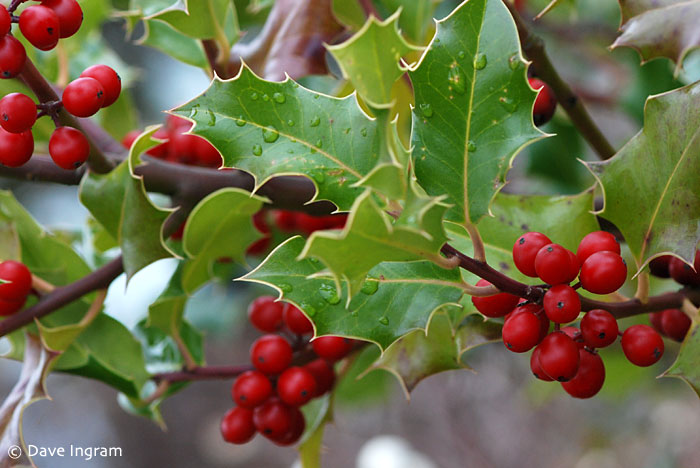As we creep ever closer to Christmas it’s appropriate to think a little about the plants that are part of seasonal celebrations. One of those is English Holly (Ilex aquifolium), a striking shrub with glossy, spiked evergreen leaves and beautiful red berries. A non-native, ornamental introduced from Europe, English Holly has escaped its garden confines and grows wild in vacant lots and parks in urban areas. Note that while the berries (borne only on the female plant) make good food for birds, people who have mistakenly eaten as few as three berries experience severe nausea, vomiting, and diarrhea. Not a pleasant way to spend your holidays.
Historically, holly has been associated with Roman celebrations of the Winter Solstice and was also considered a means to ward off evil and witchcraft. Pagans brought holly into the house to serve as a home for faeries and tiny elves during the cold winter months. Given the recent cold snap here on the West Coast, that’s certainly a fitting reason to deck the halls and bring a little “holly-day” cheer into your own house this season.
To learn more about English Holly, English Ivy and Mistletoe, read Holly, A Symbol in Winter Long Before Christmas over at The Natural Capital.

